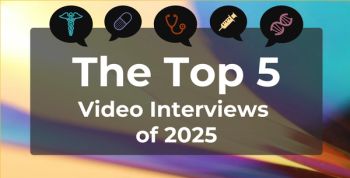
Darren Chen Highlights Virtual Visit Success in Ophthalmic Care
Certain ophthalmic subspecialties were more well suited for telemedicine use based on what tends to get covered in patient visits, said Darren Chen, MD student at Weill Cornell Graduate School of Medical Sciences.
Certain ophthalmic subspecialties were more well suited for telemedicine use based on what tends to get covered in patient visits, said Darren Chen, MD student at Weill Cornell Graduate School of Medical Sciences.
Transcript
What can we learn from your study on the utilization of ophthalmic video visits in oculoplastic surgery over time during the pandemic and how these changing levels can predict or inform use post pandemic?
The most valuable piece of information that we learned probably was that there are certain ophthalmic subspecialties that are probably more well suited for telemedicine use. Namely, the 2 that come to mind, and that were presented in our study, were oculoplastic surgery and neuro-ophthalmology.
For oculoplastic surgery, there is more of a reliance on an external examination, rather than the use of a slit lamp or fundoscopy to look at the back of the eye. And so, that lends itself well to high-res video conferencing.
And then, as for neuro-ophthalmology, a lot of the time physicians will spend a lot of time obtaining a great history from the patient, also, an external exam, and also reviewing past imaging and field tests, that none of these things really require in-person visits to accomplish.
So, in those terms, we've learned that over the course of the pandemic that utilizing video visits for these 2 subspecialties are very valuable.
Your study was conducted at an urban care center; what might be concerns with virtual care when moving out to a more rural population and the digital access challenges they might face?
For rural populations, the biggest issue for live video conferencing for telehealth visits would be access to high-speed internet. It's easy with like broadband infrastructure and like gigafiber in urban areas like New York City. But I would suspect that if you venture out into more rural areas, even areas like upstate New York, there's probably a lack of sufficient internet speeds that would make it difficult to conduct live video conferencing with good enough video and audio quality to make ophthalmic care possible.
I think we would also expect that video conferencing software is advanced and perhaps it would be more difficult for older patients in rural areas to adapt to these technologies. But looking at the data that we found, there was not much complaint about the audio or visual quality and difficulty in signing on to conduct these video visits. So, I think that as long as the infrastructure is there, I think that patients will probably adapt very quickly, even in the most rural settings.
Newsletter
Stay ahead of policy, cost, and value—subscribe to AJMC for expert insights at the intersection of clinical care and health economics.







































